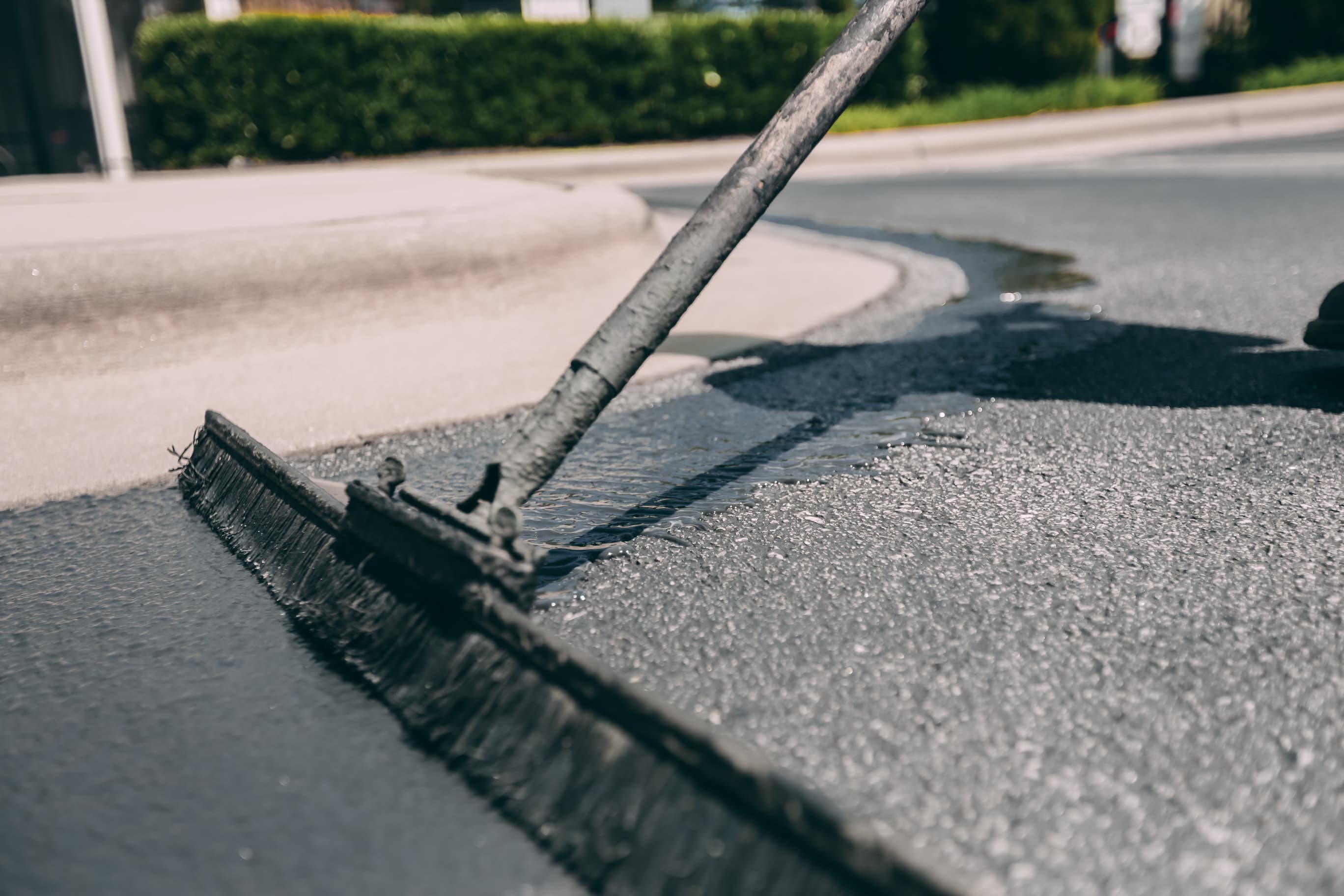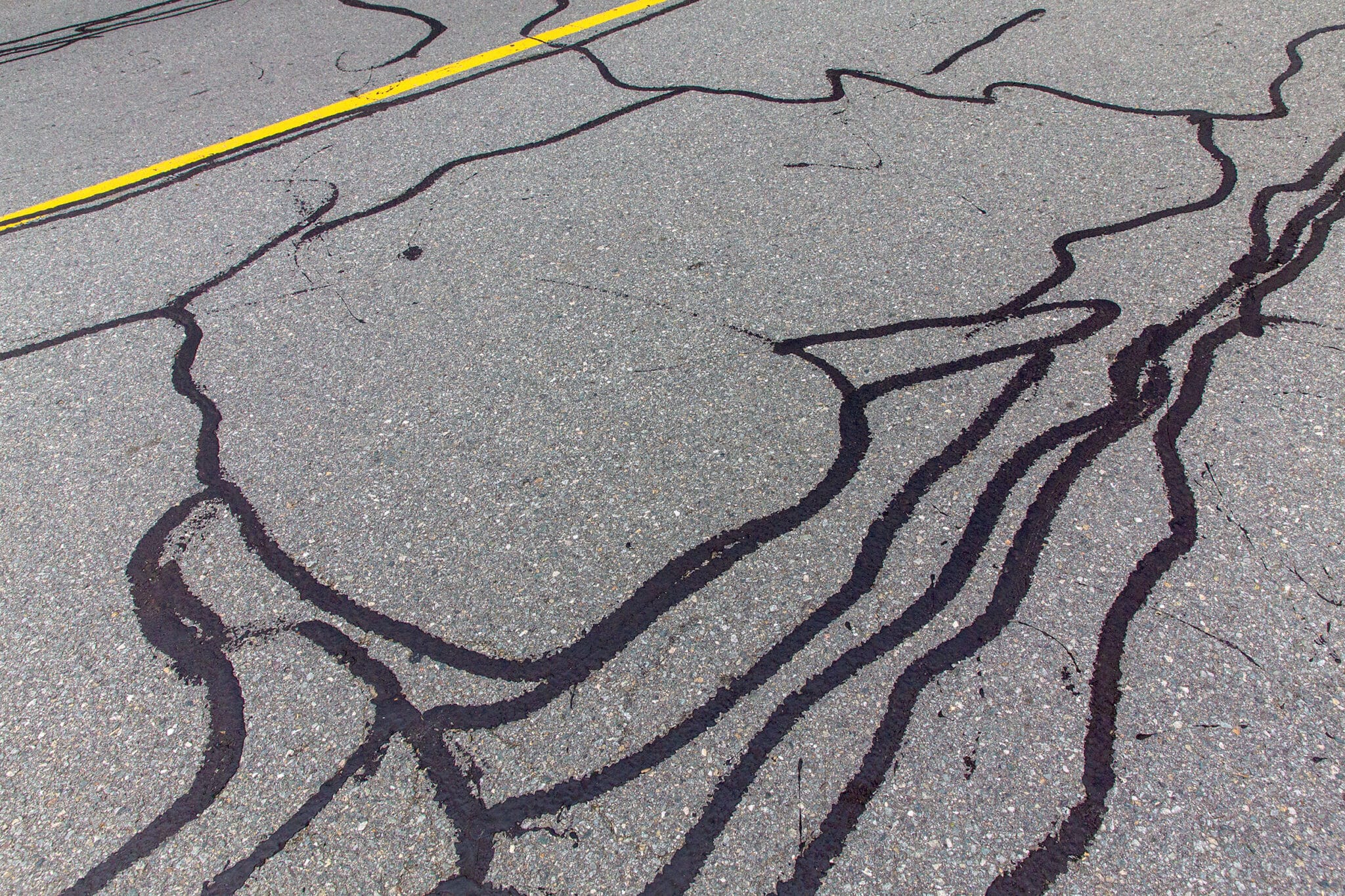Optimize Durability: Warm Mix Asphalt Sealing for Angled Parking Structures
Optimize Durability: Warm Mix Asphalt Sealing for Angled Parking Structures
Blog Article
Hot Mix Asphalt: A Lasting Remedy for Sidewalk
Warm Mix Asphalt (HMA) has arised as a leading lasting choice for pavement solutions, supplying a myriad of ingenious modern technologies and ecological benefits. As the need for eco-friendly building and construction methods grows, checking out the subtleties of HMA's sustainability can supply useful understandings right into the future of pavement remedies.
Environmental Advantages of Hot Mix Asphalt

Additionally, Warm Mix Asphalt assists to minimize metropolitan warmth island impacts. Its dark shade takes in sunshine, minimizing the quantity of heat mirrored back right into the environment contrasted to lighter-colored pavements. This can decrease ambient temperatures in metropolitan areas, reducing the need for air conditioning and inevitably reducing energy intake.
Additionally, Hot Mix Asphalt adds to boosted stormwater management. Its porous nature enables water to reenergize and infiltrate the pavement groundwater supplies, decreasing drainage and the risk of flooding. These environmental benefits make Hot Mix Asphalt a sustainable option for paving highways and roadways.
Energy Effectiveness in HMA Production
Is energy effectiveness a critical factor in the production of Hot Mix Asphalt (HMA)? Definitely. Power plays a significant role in the production of HMA, impacting both expense and environmental sustainability. One essential aspect of energy efficiency in HMA production is using cozy mix asphalt (WMA) modern technologies (hot mix asphalt). WMA enables the blending and positioning of asphalt at lower temperature levels contrasted to typical warm mix asphalt, leading to minimized power usage during manufacturing. This procedure not only reduces gas usage however also lowers greenhouse gas exhausts, making it an extra eco-friendly option.
In addition, improvements in plant technologies have actually caused more energy-efficient HMA manufacturing processes. Modern plants are developed with functions like recycled asphalt sidewalk (RAP) processing abilities, reliable heater systems, and enhanced insulation, all contributing to energy savings. By optimizing power usage in HMA manufacturing, the industry can minimize its carbon footprint while keeping premium sidewalk materials. Power effectiveness is, for that reason, an essential factor to consider in guaranteeing the sustainability of Warm Mix Asphalt production.
Recyclability of Hot Mix Asphalt
The recyclability of Warm Mix Asphalt (HMA) is a pivotal facet of its sustainability and long-term ecological influence. HMA is among one of the most recycled materials in the United States, with over 100 million bunches of reclaimed asphalt pavement (RAP) being recycled yearly in new sidewalk building and construction. Recycling HMA supplies a number of ecological advantages, such as reducing the need for virgin materials, decreasing energy consumption during production, and reducing the quantity of waste sent out to land fills.
The process of recycling HMA involves milling the existing pavement, squashing it into smaller pieces, and mixing it with new aggregate and asphalt binder to produce a recycled mix. This recycled mix can usually perform as well as and even better than conventional HMA, while needing fewer basic materials and creating reduced greenhouse gas exhausts. By incorporating RAP into new pavement tasks, roadway agencies can conserve natural resources, reduce prices, and decrease the ecological impact of roadway building and construction and upkeep activities. In general, the recyclability of HMA plays a substantial role in advertising lasting methods within the pavement industry.

Long-Term Performance of HMA
Asphalt pavements show resilience and strength over an extended period, showing the long-lasting efficiency of Warm Mix Asphalt (HMA) The durability of HMA can be associated to its capability to stand up to rush hour loads, harsh climate condition, and the impacts of aging. Researches have actually revealed that properly designed and appropriately built HMA pavements can last for 20 years or more with regular upkeep. The trick to maximizing the long-term efficiency of HMA depends on utilizing top notch products, following best methods in building and construction, and Read More Here carrying out efficient maintenance strategies. Correct drain, routine assessments, and timely repairs are essential for maintaining the architectural integrity of HMA sidewalks with time. Furthermore, improvements in HMA modern technology, such as using polymer-modified binders and cozy mix asphalt, have actually even more enhanced the durability and long life of HMA pavements. By focusing on top quality building and maintenance techniques, HMA continues to confirm itself as a sustainable and cost-effective solution for resilient pavement infrastructure.

HMA: Durability and Sustainability
Showing both sturdiness and sustainability, Hot Mix Asphalt (HMA) has actually become a keystone in the construction of resilient pavement infrastructures - hot mix asphalt. HMA's longevity comes from its capacity to stand up to hefty tons, harsh weather condition conditions, and linked here high web traffic volumes, making it a trustworthy option for roadways, freeways, and airport runways. The make-up of HMA, which generally consists of aggregates, binder, and filler, plays an essential duty in enhancing its durability and resistance to tear and wear
Additionally, HMA's sustainability description depends on its recyclability and energy-efficient production procedure. The capacity to reuse recovered asphalt sidewalk (RAP) in brand-new HMA blends reduces the demand for virgin products and decreases the environmental effect of sidewalk building and upkeep. Additionally, the energy effectiveness of creating HMA depends on its reduced blending temperatures compared to other sidewalk materials, resulting in reduced energy intake and greenhouse gas emissions.
Conclusion
In final thought, hot mix asphalt (HMA) provides a sustainable option for sidewalk with its eco-friendly characteristics. HMA's recyclability, energy efficiency in production, and long-term sturdiness make it an eco-friendly choice for roadway building. By saving all-natural sources, reducing waste, and lowering greenhouse gas exhausts, HMA plays a critical function in advertising sustainability in facilities growth. Its capability to mitigate urban warm island effects even more emphasizes its relevance in creating environmentally conscious and resistant pavement systems.
HMA is one of the most recycled materials in the United States, with over 100 million bunches of recovered asphalt pavement (RAP) being recycled yearly in new sidewalk building.The procedure of recycling HMA involves grating the existing pavement, crushing it right into smaller sized pieces, and blending it with brand-new aggregate and asphalt binder to create a recycled mix.Asphalt pavements show toughness and resilience over an extensive period, showing the long-term efficiency of Hot Mix Asphalt (HMA) In addition, improvements in HMA technology, such as the use of polymer-modified binders and cozy mix asphalt, have even more enhanced the toughness and longevity of HMA pavements. The capacity to reuse recovered asphalt sidewalk (RAP) in brand-new HMA mixtures decreases the need for virgin materials and lessens the ecological impact of sidewalk building and construction and maintenance.
Report this page